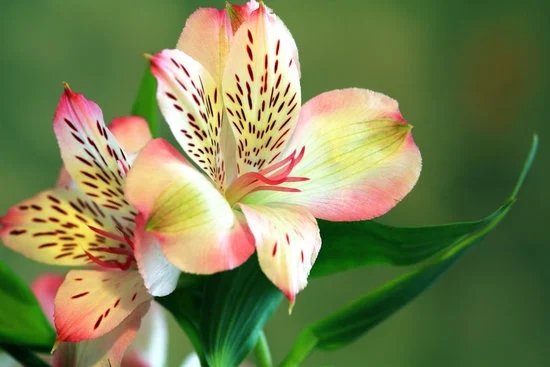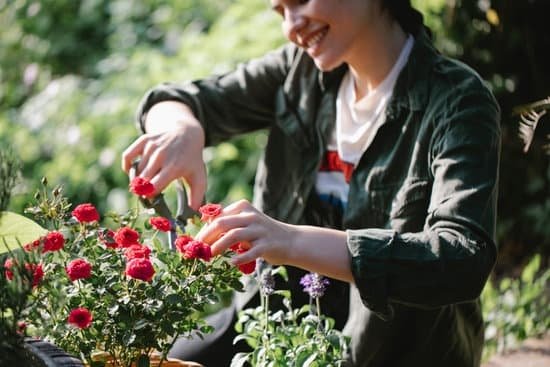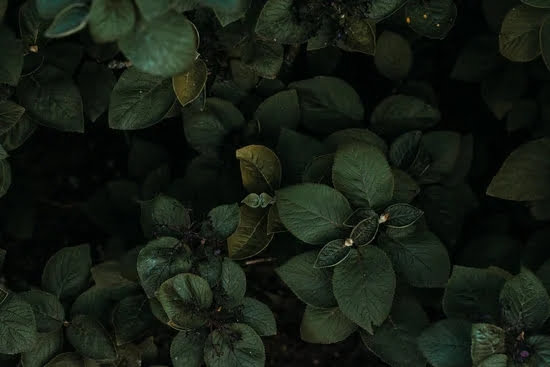Indoor Vegetable Gardening Tips For Beginners
If you are like most people, you probably think of gardening as something that you do outdoors. However, did you know that you can also garden indoors? Indoor vegetable gardening is a great way to get your family interested in gardening, and it is also a great way to get fresh vegetables all year round.
The first thing that you need to do when starting an indoor vegetable garden is to choose the right vegetables. Not all vegetables will grow well indoors, so you need to choose vegetables that are suited for growing in containers. Some good choices include tomatoes, peppers, cucumbers, lettuce, and herbs.
Once you have chosen the vegetables that you want to grow, you need to select the right containers. You can use any type of container that you want, but it is important to choose a container that is large enough to accommodate the vegetables. You also need to make sure that the container has drainage holes so that the soil can drain properly.
The next step is to prepare the soil. You can either use commercial potting soil or make your own soil mix. If you choose to make your own soil mix, you will need to combine equal parts of potting soil, compost, and perlite or vermiculite.
Once the soil is ready, you can start planting the vegetables. Be sure to follow the planting instructions that come with the vegetables. Most vegetables will need at least six hours of sunlight per day, so you will need to place the containers in a sunny location.
Water the vegetables regularly, and be sure to fertilize them every few weeks. You can either use a commercial vegetable fertilizer or make your own fertilizer by combining equal parts of compost, manure, and water.
Harvest the vegetables when they are ripe, and enjoy the fruits (or vegetables) of your labour!
Gardening Tips And Tricks Vegetables
are not the only plants that can be grown in a garden; flowers can be grown as well. Many gardeners grow flowers to enhance the appearance of their garden, while others grow flowers to attract bees and other pollinators. There are many different types of flowers that can be grown in a garden, and each type has its own set of growing requirements.
Some flowers, such as impatiens and petunias, can be grown in containers or in the ground. Other flowers, such as lilies and roses, require more space and should be grown in a garden bed. When choosing flowers to grow in your garden, it is important to consider the growing requirements of each type of flower.
Some flowers, such as marigolds, can be grown in any type of soil, while other flowers, such as lilies, require well-drained soil. Some flowers, such as zinnias, require full sun, while other flowers, such as petunias, can be grown in partial shade.
When planting flowers in your garden, it is important to plant them in the right location. Some flowers, such as lilies, should be planted in an area that receives full sun, while other flowers, such as impatiens, can be planted in an area that receives partial shade.
When planting flowers, it is important to keep in mind the height of the plants. Some flowers, such as petunias, grow tall, while other flowers, such as marigolds, grow short. When planting flowers, it is important to plant tall flowers in the back of the garden, and short flowers in the front of the garden.
Flowers can be used to attract bees and other pollinators to the garden. Some flowers, such as sunflowers and zinnias, are pollinated by bees, while other flowers, such as roses, are pollinated by butterflies. When planting flowers to attract pollinators, it is important to plant a variety of different types of flowers.
Flowers can also be used to add color to the garden. When choosing flowers to add color to the garden, it is important to choose a variety of different colors. Some flowers, such as petunias, come in a variety of different colors, while other flowers, such as marigolds, come in a variety of different shades of yellow and orange.
Flowers can be used to create a garden design. When planting flowers, it is important to plant them in a way that creates a design. Some gardeners like to create a garden design by planting a variety of different types of flowers in a row. Other gardeners like to create a garden design by planting a variety of different types of flowers in a circle.
Flowers can be used to add fragrance to the garden. Some flowers, such as roses, come in a variety of different fragrances, while other flowers, such as jasmine, come in a variety of different scents. When planting flowers to add fragrance to the garden, it is important to plant a variety of different types of flowers.
Vegetable Gardening Tips In Malayalam
Gardening is a great way to get exercise and fresh air, while enjoying the fruits (or vegetables) of your labor. But before you can enjoy your garden, you need to plant it! Here are a few tips to help you get started:
Pick the right spot: Not all plants grow well in every climate, so be sure to pick the right spot for your garden. If you live in a warm climate, you’ll want to plant vegetables like tomatoes and peppers, which need lots of sun. If you live in a colder climate, you’ll want to plant vegetables like broccoli and cauliflower, which can tolerate cooler temperatures.
Not all plants grow well in every climate, so be sure to pick the right spot for your garden. If you live in a warm climate, you’ll want to plant vegetables like tomatoes and peppers, which need lots of sun. If you live in a colder climate, you’ll want to plant vegetables like broccoli and cauliflower, which can tolerate cooler temperatures. Prepare the soil: Before you can plant anything, you need to prepare the soil. You can do this by using a garden tiller to break up the soil, then adding some organic matter, like compost or manure. Be sure to till the soil well, then rake it smooth before planting.
Before you can plant anything, you need to prepare the soil. You can do this by using a garden tiller to break up the soil, then adding some organic matter, like compost or manure. Be sure to till the soil well, then rake it smooth before planting. Plant your vegetables: Once the soil is prepared, it’s time to plant your vegetables. Be sure to read the instructions that come with your plants, and follow the planting guidelines carefully. Most vegetables should be planted in rows, with spacing in between the plants.
Once the soil is prepared, it’s time to plant your vegetables. Be sure to read the instructions that come with your plants, and follow the planting guidelines carefully. Most vegetables should be planted in rows, with spacing in between the plants. Water your vegetables: Once your vegetables are planted, be sure to water them regularly. The amount of water your vegetables need will vary, depending on the type of vegetable and the climate you live in. But be sure to water them enough to keep the soil moist, but not wet.
Once your vegetables are planted, be sure to water them regularly. The amount of water your vegetables need will vary, depending on the type of vegetable and the climate you live in. But be sure to water them enough to keep the soil moist, but not wet. Mulch your vegetables: Mulching your vegetables is a great way to keep the soil moist and protect your plants from the heat of the sun. You can use a variety of materials to mulch your plants, like straw, leaves, or bark chips. Be sure to mulch your plants regularly, especially during the summer months.
Mulching your vegetables is a great way to keep the soil moist and protect your plants from the heat of the sun. You can use a variety of materials to mulch your plants, like straw, leaves, or bark chips. Be sure to mulch your plants regularly, especially during the summer months. fertilize your vegetables: Fertilizing your vegetables is a great way to help them grow big and strong. You can use a variety of fertilizers, like organic or chemical fertilizers. Be sure to read the instructions that come with your fertilizer, and follow the dosage guidelines carefully.
Fertilizing your vegetables is a great way to help them grow big and strong. You can use a variety of fertilizers, like organic or chemical fertilizers. Be sure to read the instructions that come with your fertilizer, and follow the dosage guidelines carefully. harvest your vegetables: Once your vegetables are big and ripe, it’s time to harvest them! Be sure to harvest your vegetables at the right time, so they are the right size and have the right flavor. Most vegetables should be harvested when they are still young and tender.
Now that you know how to plant a vegetable garden, it’s time to get started! Get your soil prepared, plant your vegetables, and water them regularly. And be sure to enjoy the fruits (or vegetables) of your labor!
Tips For Container Gardening Vegetables
When you think of container gardening, you may think that it is only for flowers. However, did you know that you can also grow vegetables in containers? Container gardening vegetables is a great way to get a garden even if you don’t have a lot of space.
When it comes to container gardening vegetables, there are a few things that you need to keep in mind. First, you need to make sure that you choose the right vegetables. Not all vegetables will grow well in containers. You want to choose vegetables that are compact and that have a low growing habit.
Some good vegetables to grow in containers include lettuce, spinach, tomatoes, peppers, and carrots. You can also grow other vegetables, but you will need to be careful to choose the right size container.
The next thing you need to keep in mind when container gardening vegetables is the soil. You want to make sure that you use a good quality soil that is specifically for vegetables. You can buy soil that is pre-made for container gardening, or you can make your own.
If you choose to make your own soil, you will need to mix together equal parts of potting soil, compost, and vermiculite. You will also need to add a small amount of fertilizer to the soil.
Once you have the soil ready, you will need to plant your vegetables. You want to plant them in the same way that you would plant them in the ground. Make sure to water them regularly and to give them plenty of sun.
Container gardening vegetables is a great way to get a garden even if you don’t have a lot of space. It is also a great way to get a garden that is easy to care for.
Patio Vegetable Gardening Tips
When you think of vegetable gardening, you might not think of doing it on your patio. However, with a little bit of creativity, you can have a thriving vegetable garden right on your patio! Here are a few tips to help you get started:
1. Choose the right vegetables. Not all vegetables are suitable for patio gardening. Choose vegetables that are compact and have a relatively short growing season. Some good choices include tomatoes, peppers, cucumbers, and zucchini.
2. Choose the right location. Choose a spot on your patio that gets plenty of sunlight. If you can, try to locate your garden near a south-facing wall, which will help to reflect additional sunlight onto your plants.
3. Use containers. If you don’t have enough space on your patio to grow vegetables in the ground, use containers instead. Containers are perfect for patio gardening, since they can be moved around easily to follow the sun.
4. Mulch your plants. Mulching your plants will help to protect them from the heat and the cold, and it will also help to retain moisture.
5. Water regularly. Vegetables need a lot of water, especially when they’re growing in containers. Make sure to water your plants regularly, and be sure to give them a good soaking at least once a week.
6. fertilize regularly. Vegetables need nitrogen, phosphorus, and potassium to grow properly. Fertilize your plants regularly with a balanced fertilizer to make sure they’re getting the nutrients they need.
With a little bit of creativity and a few basic gardening tips, you can have a thriving vegetable garden on your patio!

Welcome to my gardening blog! I am passionate about plants and enjoy sharing my knowledge and experiences with others. In this blog, I will write about everything related to gardening, from tips on how to get started to updates on my own garden projects.





